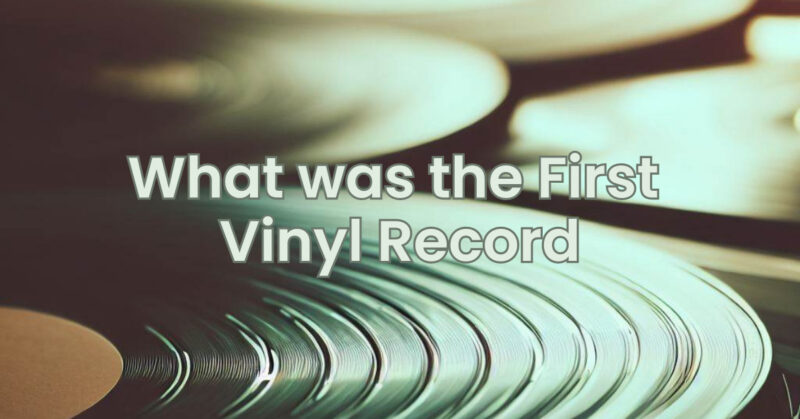Vinyl records have left an indelible mark on the history of recorded music, captivating generations of music enthusiasts. In this article, we embark on a journey to discover the origins of vinyl records and explore the identity of the first-ever vinyl record, which played a pivotal role in shaping the trajectory of the music industry.
The Birth of Vinyl Records: The advent of vinyl records can be traced back to the late 1930s and early 1940s, when a team of researchers at Columbia Records embarked on a mission to develop a superior material for audio playback. Led by Dr. Peter Goldmark, the team aimed to overcome the limitations of existing recording formats and enhance both the durability and sound quality of records.
The Birth of the LP: The groundbreaking moment arrived in 1948 when Columbia Records introduced the first vinyl record format known as the LP, or long-playing record. This historic vinyl release transformed the way music was enjoyed by listeners. Unlike its predecessors, the LP featured microgrooves and played at 33 1/3 revolutions per minute (RPM). These advancements allowed for a longer playing time, enabling entire albums to be experienced on a single disc.
The Identity of the First Vinyl Record: While the introduction of the LP format was a landmark achievement, pinpointing the exact identity of the first vinyl record is a subject of debate among music historians. Several records released around the same time claim the title of being the first vinyl record, and each carries its own significance in the vinyl record’s evolution.
One contender is the album “Mendelssohn: Concerto in E Minor” performed by violinist Nathan Milstein and the New York Philharmonic, which was released by Columbia Records in June 1948. This album is widely recognized as one of the earliest commercial vinyl records and showcased the superior sound quality and extended playing time made possible by the vinyl format.
Another significant release is “The Voice of Frank Sinatra,” a compilation album featuring the iconic crooner’s hit songs. It was also released by Columbia Records in 1948, capturing the essence of Sinatra’s timeless vocals on the vinyl medium and contributing to the popularity of the LP format.
The Impact and Legacy: Regardless of the precise identity of the very first vinyl record, the introduction of the LP format transformed the music industry. Vinyl records offered listeners a more immersive and engaging experience, with the ability to enjoy entire albums in one sitting. The popularity of vinyl records soared throughout the 1950s and 1960s, becoming the primary medium for music consumption and creating a golden era of record production.
While digital formats and streaming services have since emerged, vinyl records have experienced a remarkable resurgence in recent years. Their warm sound, tactile nature, and nostalgic appeal have attracted a new generation of music enthusiasts, ensuring the enduring legacy of vinyl records in the digital age.
The first vinyl record, whether it be “Mendelssohn: Concerto in E Minor” or “The Voice of Frank Sinatra,” marked a watershed moment in the history of recorded music. The introduction of the LP format revolutionized the way music was consumed, providing a more immersive and enduring listening experience. While the identity of the very first vinyl record may be subject to debate, its impact on the music industry remains undeniable. Vinyl records continue to captivate listeners today, bridging the gap between past and present and reminding us of the enduring charm and magic of analog sound.


